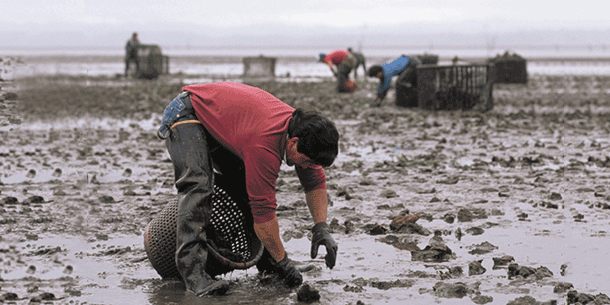The Seattle Times reported this week that oyster growers in southwestern Washington state have given up their years-long quest for permits to spray imidacloprid insecticides on their shellfish farms.
This story has been brewing along the coastal mudflats of Gray’s Harbor and Willapa Bay, which are about three hours from Seattle. Shellfish farmers, some of which operate family farms that have been harvesting shellfish out of these shallow bays for decades, were struggling with a native species of burrowing shrimp that interferes with oyster farming (the oysters, by the way, are non-native varieties from Asia). The shrimp burrow down into the mud, softening it so that farmed oysters sink and suffocate.
To control the shrimp, shellfish farmers turned to insecticides. In 1963 they started using the neurotoxin carbaryl, applied at rates up to 8 times what farmers on land used. But, the state Department of Ecology (DOE) banned carbaryl use in the early 2000s after concerns over it’s safety arose, and the industry turned to imidacloprid as an alternative.
Their initial permit was filed in 2015, first approved, and then rescinded after a public outcry. The growers even got some state legislators to introduce legislation to allow them to go rogue and skip any scientific review or environmental assessment requirements. The bill went nowhere, as did the additional applications and appeals that followed. But, this month the shellfish growers officially agree to close the case on imidacloprid.
But, what door will be opened instead? The settlement between Washington DOE and the oyster growers includes funding to support the search for alternatives, including other chemical treatments. The state will also conduct dye tests to better understand how chemicals like insecticides move through the water.
Source:
Hal Bernton, “Oyster growers agree to abandon quest to use controversial insecticide in Southwest Washington tidelands,” Seattle Times, Date Posted: October 21, 2019, Date Accessed: 10/23/2019.

